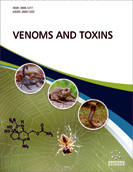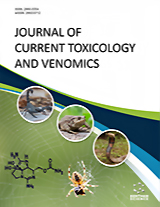Abstract
A diversity of marine invertebrates, such as cnidarians are rich sources of large bio-active molecules. This chemo-diversity of bio-active compounds has a promising potential in several biotechnological and therapeutic applications. On the basis of a comparative bibliographic approach, we intend in this review to present and discuss an overview of: i) the diversity of marine invertebrates as a candidate for bio-active molecules production; ii) the diversity of bio-active compounds and venom derived from these organisms; iii) the relationship between, the diversity of these marine organisms and the structure of the toxins they secrete. In this bibliographic study, a focus is going to be made on protein neurotoxins targeting ion channels. We also discuss the potential link between the bioecological characteristics of cnidarians and the diversity of toxins.
Keywords: Cnidarians, marine gastropods, diversity, venoms, toxins, ion channels.
[http://dx.doi.org/10.1126/science.277.5325.486]
[http://dx.doi.org/10.1016/j.crvi.2011.02.009] [PMID: 21640952]
[http://dx.doi.org/10.3390/md17090491]
[http://dx.doi.org/10.1055/s-0042-101353] [PMID: 26891002]
[http://dx.doi.org/10.2307/2992311]
[http://dx.doi.org/10.1016/j.toxicon.2009.06.031] [PMID: 19576920]
[http://dx.doi.org/10.1016/j.drudis.2018.08.011] [PMID: 30165198]
[http://dx.doi.org/10.3390/md18040195] [PMID: 32272701]
[http://dx.doi.org/10.3390/md403193]
[http://dx.doi.org/10.3390/toxins7030936]
[http://dx.doi.org/10.1016/j.toxicon.2004.09.018] [PMID: 15581690]
[http://dx.doi.org/10.1016/j.coph.2009.05.006] [PMID: 19540804]
[http://dx.doi.org/10.1073/pnas.1616232114] [PMID: 28396446]
[http://dx.doi.org/10.1093/icb/icz106] [PMID: 31225595]
[http://dx.doi.org/10.3390/md18100507] [PMID: 33036158]
[http://dx.doi.org/10.3390/md18030173] [PMID: 32245015]
[http://dx.doi.org/10.3390/md17060325] [PMID: 31159357]
[http://dx.doi.org/10.3390/toxins6010108] [PMID: 24379089]
[http://dx.doi.org/10.1186/1678-9199-19-12] [PMID: 24499018]
[http://dx.doi.org/10.3390/toxins9120397] [PMID: 29215605]
[http://dx.doi.org/10.3390/md12126058] [PMID: 25522317]
[http://dx.doi.org/10.1080/15216540410001668055] [PMID: 15085932]
[http://dx.doi.org/10.1002/iub.158] [PMID: 19165896]
[http://dx.doi.org/10.1016/j.pep.2004.07.011] [PMID: 15477084]
[http://dx.doi.org/10.1111/j.1469-7793.1999.0203r.x] [PMID: 10373702]
[http://dx.doi.org/10.1074/jbc.274.31.21885] [PMID: 10419508]
[http://dx.doi.org/10.3390/md15090287] [PMID: 28902151]
[http://dx.doi.org/10.3390/md16100360]
[http://dx.doi.org/10.1016/j.peptides.2009.12.005] [PMID: 20015459]
[http://dx.doi.org/10.1038/sj.emboj.7600177] [PMID: 15044953]
[http://dx.doi.org/10.1021/acs.jproteome.5b00630]
[http://dx.doi.org/10.1159/000438449] [PMID: 26397110]
 16
16 2
2




